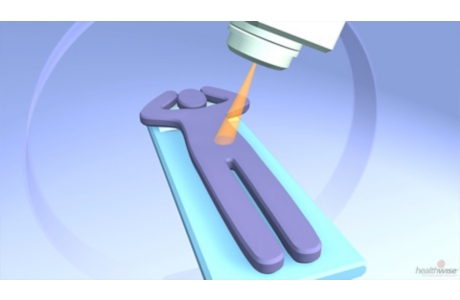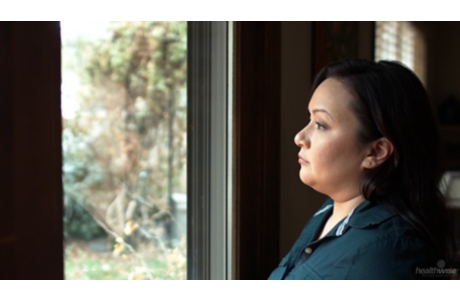Radiation Therapy for Nonmelanoma Skin Cancer
Treatment Overview
Radiation therapy is used to destroy cancer cells. This procedure may require 15 to 30 visits to a facility with special equipment. Radiation therapy may be used in combination with other types of therapy to treat aggressive or recurrent skin cancer.
What To Expect
Recovery time may vary depending on the site treated and the amount of radiation used.
Why It Is Done
Radiation therapy may be used:
- If you are older than 60.
- For skin cancers that are too large or deep to be treated with surgery or with surgery alone.
- For skin cancers in places that are hard to treat with surgery, such as the eyelid, ear, or nose.
- For skin cancers that have come back after surgery (recurrent).
- To relieve symptoms but not to cure the skin cancer (palliative treatment).
How Well It Works
Surgery and radiation are the primary treatments for nonmelanoma skin cancer, but studies show that surgery has the best results.footnote 1 Still, radiation therapy has very good cure rates and cosmetic results, so sometimes it is the treatment of choice.
Risks
Risks of radiation therapy to treat skin cancer include the following:
- New skin cancers may occur in the surrounding area.
- Skin cancers may come back after radiation therapy and be harder to treat successfully.
- Skin may become dry and hairless. Or skin may lose color or become easily infected (chronic radiation dermatitis).
- Skin may shrink and waste away (skin atrophy).
- Healthy skin may be destroyed by radiation (cutaneous necrosis).
Side effects are common but typically go away when treatment is finished. They include:
- Fatigue.
- Redness and itching of the skin in the radiation field.
- Hair loss in the area inside the radiation field. But hair loss can be permanent.
- Nausea, vomiting, or diarrhea if the abdomen or pelvis are radiated.
What To Think About
Radiation therapy is most often reserved for use in older adults. It may lead to other skin cancers in younger people as they age.
Credits
Current as of: December 19, 2018
Author: Healthwise Staff
Medical Review:E. Gregory Thompson, MD – Internal Medicine & Kathleen Romito, MD – Family Medicine & Amy McMichael, MD – Dermatology
Current as of: December 19, 2018
Author: Healthwise Staff
Medical Review:E. Gregory Thompson, MD – Internal Medicine & Kathleen Romito, MD – Family Medicine & Amy McMichael, MD – Dermatology
This information does not replace the advice of a doctor. Healthwise, Incorporated, disclaims any warranty or liability for your use of this information. Your use of this information means that you agree to the Terms of Use. Learn how we develop our content.




